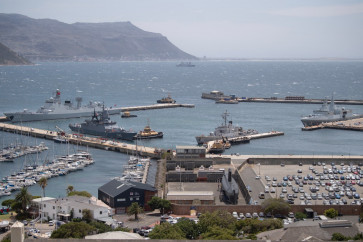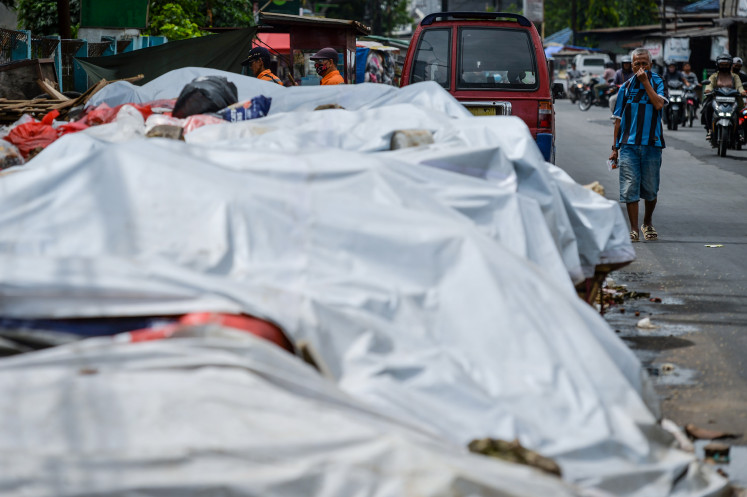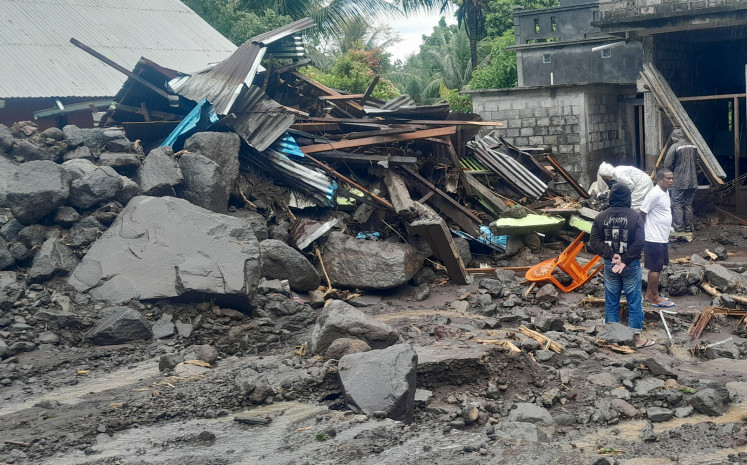Popular Reads
Top Results
Can't find what you're looking for?
View all search resultsPopular Reads
Top Results
Can't find what you're looking for?
View all search resultsExecutive column: ‘Smart technology can solve Jakarta woes’
Siemens went through a process of restructuring in 2011 that resulted in the formation of the Infrastructure and Cities sector as the company’s fourth business arm
Change text size
Gift Premium Articles
to Anyone
S
iemens went through a process of restructuring in 2011 that resulted in the formation of the Infrastructure and Cities sector as the company’s fourth business arm. Roland Busch, a member of the managing board of Siemens AG and CEO of the Infrastructure and Cities sector, together with Hans Peter Haesslein, CEO of Siemens Indonesia, recently spoke with The Jakarta Post’s Mariel Grazella on what the new sector would offer to the Indonesian market. Below are excerpts from the interview.
Question: What were the major reasons behind the restructuring process and how has this process transformed Siemens?
Answer: There were two major reasons for reorganizing Siemens and creating the new sector. The first is to focus more on the market. The second reason is to give Siemens room for growth. We want to have the board responsible over and closer to the different customer segments.
We now have a health care sector dedicated to everything that goes into the health care market. The other sector is Industry, which is all about automating industries and delivering value for industries such as automotive and mining. Energy is another sector. Here we are responsible for energy generation and transmission. The portfolios which have ended up in Infrastructure and Cities are geared to focus on the infrastructure and cities market, as well as the related infrastructure. We are talking about airports, harbors and distribution centers — basically everything needed to maintain a city.
How does Siemens view Jakarta, being the business and administrative hub of Indonesia, in terms of the biggest challenges that it must answer?
Jakarta is one of the mega-cities and a fast growing city with a population of 10 or maybe 15 million people. It is a city which is also developing very fast with regards to its infrastructure, with a lot of development work in front of the city.
One of the challenges is traffic. The way you move people and goods in a city is a basic driver of growth for the city. It determines whether the city is functioning or not, whether people like living in it and whether you can attract industries and employers. There are more and more two-wheelers and four wheelers moving into the city. The only way to solve traffic is by offering good public transportation, such as by having a very good bus fleet. If you really want to deal with the ever increasing traffic flow, you have to go for things like metro light rail, coupled with intermodal transportation.
The second challenge is energy. You just have to get enough energy into the city. This is about how you distribute energy in the city and at the same time, this is about energy efficiency. To talk about energy efficiency means talking about buildings because 40 percent of global energy consumption goes to buildings — residential buildings, but in particular, commercial buildings — so making buildings more efficient by consuming less energy is one of the big levers in energy efficiency.
Another particular challenge I see is water wastage and this is something where Jakarta has a long way to go. Only 20-30 percent of your waste is recycled or collected. That is below the average in the other cities. If I’m not misinformed, only 50 percent of water that enters your pipes ends up with the consumer. The rest is lost in between.
What risks would Jakarta run into if the city failed to solve them within the next five years or so?
The interesting part about cities is that they are increasingly competing against each other, such as competing for talent. Jakarta will grow and will definitely need to attract and keep people as well as industries. Not dealing with this problem is not an option because otherwise, people will move to other places and that is definitely what Jakarta would not like.
How would advancements in technology help solve problems connected to transportation, energy and water?
Normally people do not like to walk more than 400 meters to access public transportation. What you have to do is offer a network of public transportion that is quite dense. The second is that it should be easy to use. That is, you have offer different modes in a city — bus, light rail, metro and the like. You have to ensure that people do not have to worry that a ticket only goes on this mode. Transportation has to be more integrated so that it is easy for people to use and access quickly.
When it comes to energy consumption in building, it is about lighting. The lights are on but people are not in the room or the lights are on when the sun is shining through many windows. It is also about heating or climate control. The room is air conditioned when nobody is in the room or the temperature is so cold that people freeze. It sounds so simple and basic. A way to control these elements is to automate it without having people running around and switching this and that off.
The second largest cause of inefficiency is from industries. There are industries that are consuming a lot of energy even though they are already cautious in terms of their use of energy, but if our engineer does a walk through, we will be talking about exchanging serial drives that consume a lot of energy.
How much business growth did Siemens Indonesia witness last year?
We were growing a solid double digit rate, minimum twice or three times of gross domestic product (GDP), last year and we are aiming to have that again this year. Last year, we invested in the area of 10 million euros in various manufacturing segments. We are investing continuously to, number one, improve our own efficiency and productivity, and of course to cover additional or new marketing segments.
Siemens has businesses worth 250 million euros in Indonesia. This figure is also the order intake we are talking about in this year and we are targeting a book-to-bill ratio of larger than one, which means good growth.










